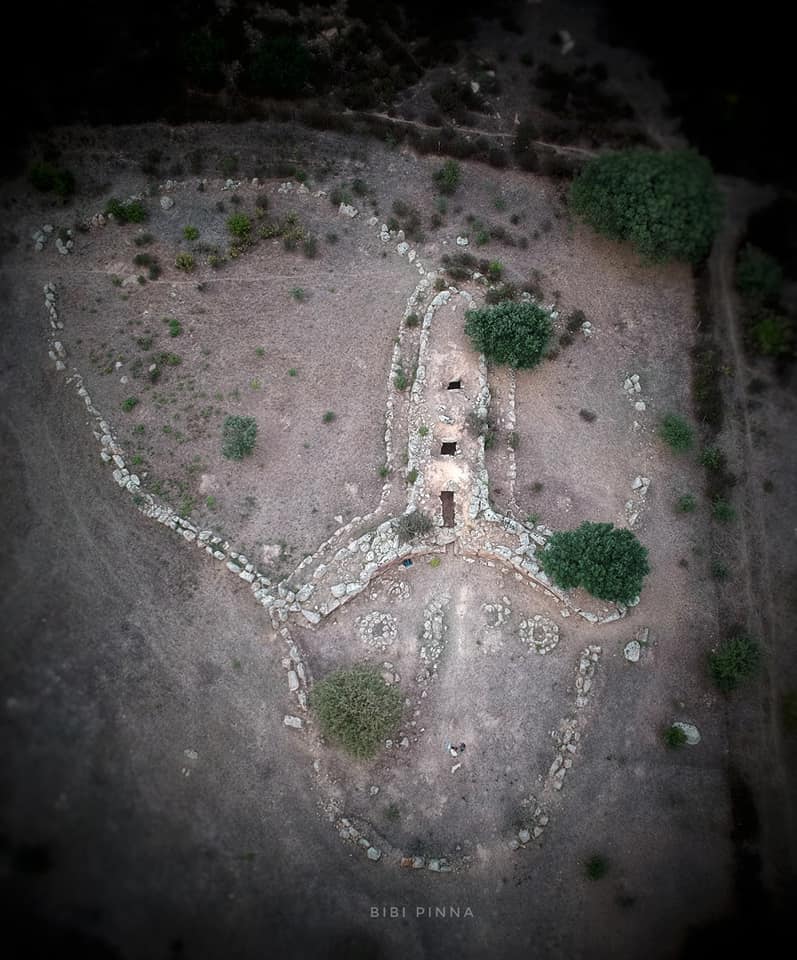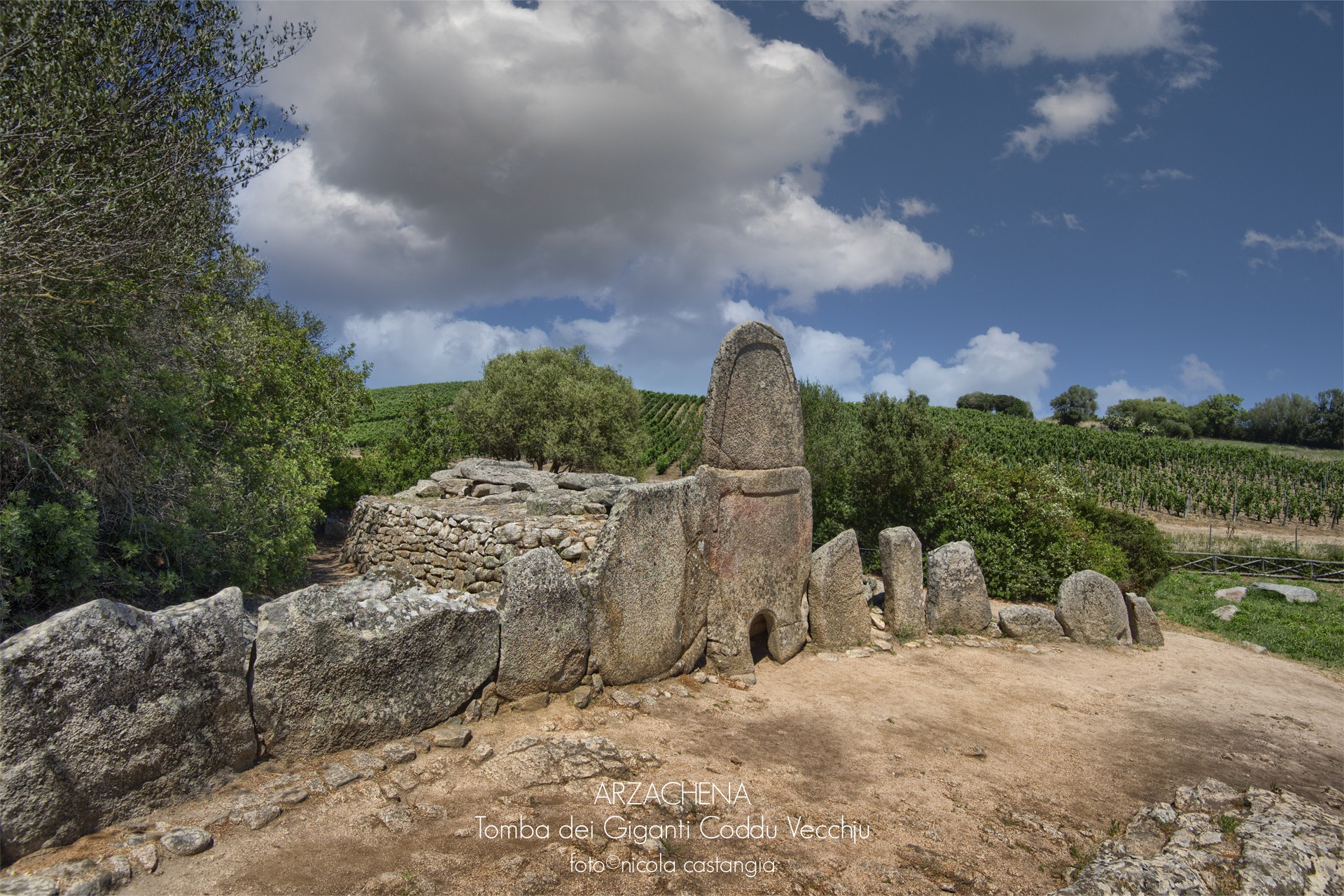The Tombs of the Giants in a brief editorial by Alfonso Stiglitz, attached to his article published in 2006 in the magazine “I Quaderni di Darwin,” special edition referring to Archaeology in Sardinia:
“These are elongated and apsidal megalithic structures with a long (up to 30 m) rectangular paved room intended for the collective burial of numerous deceased. The facade is shaped like an exedra made in different ways: with knife-shaped slabs and a tall arched stele in the center, preferably in central-northern Sardinia but with some sporadic presence in the south, of which the most famous example is that of Li Longhi in Arzachena, with a stele 3.75 m high; while in the central-southern part of the island, the facade consists of an exedra with overlapping rows with an entrance in the center lacking a stele, as in the case of the tomb of Is Concias in Quartucciu. The first type seems slightly older than the second. It is somewhat surprising that a society showing clear indicators of advanced social and territorial hierarchization uses collective burial forms and that the substantially reduced number of these structures – about 500 are known – is insufficient to cover for centuries the needs of numerous settlements. The topic is undoubtedly tricky given the greater ease of destruction and disappearance of tombs compared to nuraghi, but the numerical disproportion is undoubtedly high. On the other hand, the absence, inexplicable compared to contemporary eastern societies, of “princely” tombs has led to the hypothesis that the tombs of the giants were reserved for the dominant groups. The history of the tombs of the giants, so called for their imposing dimensions, begins at the dawn of the nuragic civilization, in connection with the corridor nuraghi, and accompanies the tholos nuraghi throughout their history. With the Final Bronze Age and the end of the nuraghi, the tombs of the giants also exhaust their story, making way for smaller corridor tombs lacking exedra and then for individual pit tombs lined with stone slabs, as seen in the examples of Sa Costa di Sardara, Antas di Fluminimaggiore, and especially in the necropolis with 33 individual tombs of Monte Prama di Cabras, from which the famous nuragic statues originate.”
In the attachments, the Tombs of the Giants of: San Cosimo in Gonnosfanadiga (Bibi Pinna); Coddu Ecchju in Arzachena (Nicola Castangia); Li lolghi in Arzachena (Romano Stangherlin); Mura Cuada in Paulilatino (Giovanni Sotgiu); Su Monte de s’Abe in Olbia (Sergio Melis); Barrancu Mannu in Santadi (Marco Cocco); Osono in Triei (Lucia Corda); S’Arena in Urzulei (Alessandro Pilia); Madau in Fonni (Patricia Droz); Is Concias in Quartucciu (Diversamente Sardi).










